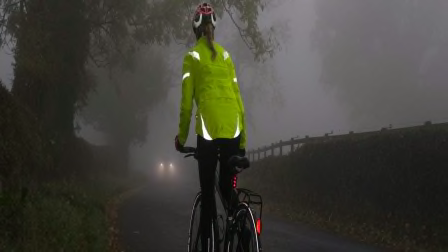Take These Steps for Safe Swimming
Avoid hazards, whether you're taking a dip in your backyard or a community pool, a local lake, or the ocean
When you shop through retailer links on our site, we may earn affiliate commissions. 100% of the fees we collect are used to support our nonprofit mission. Learn more.

With COVID-19 rates coming down across the U.S. just as extreme heat waves are hitting many areas, you may be looking forward to a trip to the local pool or beach this summer. Before you head out, be sure to check the beach or facility’s COVID-19 precautions, if there are any. (New York City’s outdoor pools, for example, will still be requiring mask use in locker rooms, bathrooms, and on the pool deck.)
Drowning
Drowning is quick and quiet, according to the CDC. There’s usually no splashing or yelling like in the movies. According to the latest data from the Consumer Product Safety Commission, around 400 children ages 15 and younger died from drowning each year from 2016 to 2018.
A key component of drowning prevention is designating one person as the “water watcher,” whose only job is to keep an eye on the pool, no smartphone allowed. If parents are still working from home, that could prove challenging, thanks to potential distractions from emails, phone calls, and video meetings, says William D. Ramos, PhD, member of the American Red Cross Scientific Advisory Council and associate professor of health and wellness design at the Indiana University School of Public Health-Bloomington.
One solution is for parents to take turns being the water watcher. Rotate shifts where one parent works while the other watches swimming kids.
Wherever you’re swimming, even if it’s in a blow-up pool, Ramos also recommends preparing everything you need ahead of time—goggles, towels, sunscreen, and snacks—so there’s no need to duck inside the house or run out to the car, leaving swimming kids unobserved.
Other Steps to Take
• Stay close. Children, as well as people who can’t swim and those who are weak swimmers, should be within an arm’s reach of an adult in case something goes wrong. And even strong swimmers and adults shouldn’t swim alone, says Nichole Steffens, aquatic product manager at the Red Cross.
• Learn CPR. Anyone watching over swimmers—parents, grandparents, babysitters, neighbors—should know how to perform CPR. Here’s a guide.
• Wear a life jacket. Weak swimmers or people who can’t swim should wear a U.S. Coast Guard-approved life jacket in or around water. Arm floaties for kids and floating pool toys aren’t sufficient, Steffens says. And anyone who goes boating should wear a life vest.
• Put away small pools. If you have a smaller temporary or blow-up pool, drain and deflate it or store it somewhere between uses so that it won’t potentially collect rainwater, creating an unexpected opportunity for unattended swimming. This has the added benefit of making sure your kids will be swimming in fresh water every time you use the pool, because temporary pools don’t have filtration or chemical disinfectant systems. Plus, standing water can be a breeding ground for mosquitoes.
• Fence in larger pools. If you have an in-ground or larger, semipermanent above-ground pool (which have filtration systems and can be left up all season), you should install a fence to separate it from the house and the rest of the yard so that children can’t get into it when you’re not watching. The gate should lock or latch automatically. And at the beginning of each swimming season, recheck the lock or latch to make sure your child can’t open it, Ramos says—kids who may not have gotten past them a year ago might be able to now.
• Don’t fight a rip current. If you’re swimming at a beach and find yourself caught in a rip current, don’t swim directly toward the shore, or you’ll risk exhausting yourself. The National Ocean Service advises swimming parallel to the shore until you’re out of the current, then swimming back to the shore at an angle.
• Get swimming lessons. Taking swimming lessons can reduce the risk of drowning, although it’s important to keep in mind, “Swimming lessons alone do not prevent drowning,” says Candice Dye, MD, an associate professor in the department of pediatrics at the University of Alabama at Birmingham. Anyone can become overwhelmed or exhausted in the water.
If swim lessons aren’t yet an option where you live, the Red Cross offers some at-home water safety education tools for kids. You can also take an online water safety course for parents and caregivers.
Stomach Bugs
If you or your child comes down with a case of diarrhea after swimming, a microbe such as cryptosporidium (crypto for short), shiga-toxin-producing Escherichia coli (STEC), or norovirus could be the culprit.
In fact, 31 states reported a total 5,420 cases of such illness related to bodies of water such as lakes, ponds, and oceans in the U.S. between 2009 and 2019, according to data from the Centers for Disease Control and Prevention.
And some microbes, including crypto, norovirus, and giardia, can sometimes be found in chlorinated pools. Crypto, for instance, which isn’t easily killed by chlorine, can live for days, even in pools that are properly maintained.
A 2018 CDC report found that the largest percentage of disease outbreaks occurred in hotel hot tubs, spas, or pools, so you may want to be extra-cautious if you’re traveling. Some bugs, such as legionella, proliferate in poorly maintained pools.
Public pools often have reports detailing violations found by inspectors. The CDC recommends asking to review those reports if you’re concerned. (For private pools, your only recourse may be buying a pool test kit, available at hardware or pool-supply stores.)
How to Prevent Them
• Obey signs. The CDC recommends staying out of swimming areas that are closed because of contamination, and avoiding water that is cloudier than usual after a heavy rainfall, is discolored, or has an unpleasant smell. Skip a swim in a body of water that has a pipe draining into or around it.
• Don’t swallow water when swimming (or in hot tubs or at playgrounds). And remind children not to swallow water or sand, which can also be germy.
• Keep sick kids and adults out of the water. Don’t swim or allow kids to swim when sick with diarrhea (even with swim diapers, which aren’t foolproof). It’s best to stay out of the water if you have an open cut or wound, too, at least without a waterproof bandage. Check with a doctor first if you have a condition that compromises your immune system.
• Wash up. Wash your hands for at least 20 seconds before eating food (use hand sanitizer that’s at least 60 percent alcohol if you can’t), and shower with soap and water before and after you swim.
Sunburn
Avoiding sunburn is key to staying safe in the summer. The sun can damage your skin in as little as 15 minutes, according to the CDC. Ultraviolet B rays cause sunburn; ultraviolet A rays tan and age your skin. Both contribute to skin cancer, the most common form of cancer in the U.S. And while the risk of skin cancer is greatest for whites, people of all ethnicities, including Hispanics, non-Hispanic Blacks, Asians, and Pacific Islanders, can be affected by it.
How to Prevent It
• Apply sunscreen early and often. Put on sunscreen at least 15 minutes before you go outside. Shake it before you use it, and reapply regularly—at least every 2 hours and anytime after you’ve been swimming or sweating.
• Seek shade. Try to stay in the shade during the sunniest part of the day if you can, from 10 a.m. to 4 p.m.
• Cover up. Sunscreen is just one part of a sun-protection strategy, says Nichole Steffens at the Red Cross. Wear a hat, and periodically put on clothing that covers your skin.
Check out a few of our top-rated sunscreens.
Swimmer's Ear
This ear infection is distinct from a typical middle-ear infection. It’s an outer-ear infection that’s triggered by contaminated water trapped in the ear canal. Swimming “produces this great environment for bacteria to have a heyday,” says Candice Dye at the University of Alabama at Birmingham.
Symptoms include itchiness inside the ear, redness or swelling, pain if the ear is tugged or pressed on, and pus that drains from the ear. (If you or your child gets it, contact your doctor, who might prescribe antibiotic eardrops.)
How to Prevent It
• Protect your ears. Keep ears dry if you can, using a swim cap or silicone earplugs (not wax).
• Remove water after a swim. Dry your ears with a towel after swimming. If you have water in an ear, tilt your head downward and pull your ear in different directions to coax water out.
• Try eardrops. Over-the-counter eardrops meant to dry out your ears can also help, Dye says. Ask your doctor to recommend a brand.
Concerns About Pool Chemicals
A 2019 study published in the CDC’s Morbidity and Mortality Weekly Report found that injuries due to contact with pool chemicals, mostly at private homes, were responsible for more than 13,500 emergency room visits between 2015 and 2017 in the U.S.
About a third of the cases were labeled as poisoning, and incidents were usually caused by the inhalation of fumes or dust (especially while opening containers of chemicals), swimming too soon after chemicals were added to pool water, or not keeping chemicals stored out of the reach of children.
Another potential problem with pool chemicals is eye, nose, or throat irritation. When the chlorine used to disinfect pool water comes into contact with waste or other substances that wash off swimmers’ bodies—including skin cells, makeup and other personal care products, dirt, sweat, urine, and fecal matter—it can create substances called chloramines. When chloramines are inhaled, they can cause coughing and wheezing, and even trigger asthma.
How to Prevent It
• Store chemicals safely. If you have a pool in your backyard, ensure that pool chemicals are kept securely out of the reach of children. If you opt for do-it-yourself pool maintenance at home, wear appropriate safety equipment, such as a mask, gloves, and goggles.
• Keep pool water clean. Showering before and after swimming can help keep chloramines from forming. Wearing a swim cap can help, too.
• Take breaks. Parents should take kids for bathroom breaks every hour to avoid accidents in the pool.
• Give it the smell test. You can tell that chloramines are present if you notice a chemical or chlorine smell in the pool area; well-maintained pools don’t have a strong chemical smell. If the pool has a strong smell, consider skipping your swim.
A Rare Danger: Naegleria Amoeba
Each year it’s common to see one or two headlines about people who contract the brain-eating amoeba Naegleria fowleri, which can grow in warm freshwater bodies, such as lakes, ponds, hot springs, and poorly maintained swimming pools. The amoeba can cause a disease of the central nervous system called primary amebic meningoencephalitis, which is almost always fatal.
The good news is that Naegleria infections are rare. Between 2010 and 2019, there were only 34 reported cases in the U.S., according to the CDC. And the amoeba won’t harm you if you swallow contaminated water; it’s dangerous only if you get it up your nose.
Naegleria infections are so uncommon that scientists haven’t been able to make definitive research-based recommendations about how to avoid it. Still, the CDC offers some commonsense tips for reducing the likelihood that you’ll expose yourself to Naegleria.
How to Prevent It
• Keep your head up. Avoid putting your head underwater in bodies of warm fresh water, such as lakes and hot springs.
• Plug your nose. If you jump in or swim underwater, pinch your nose or use a nose clip.
• Stay out of the mud. Try not to stir or dig up sediment in warm freshwater areas.




















